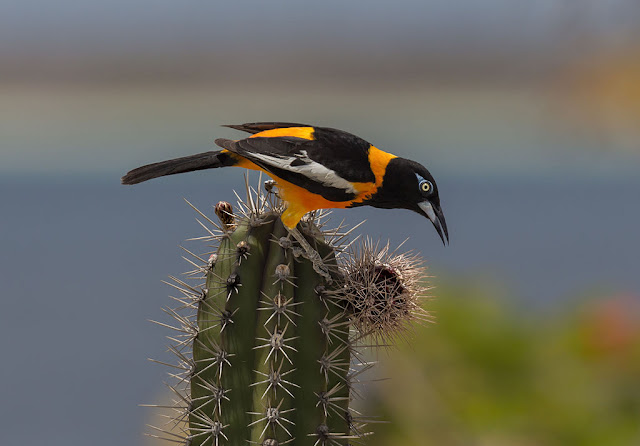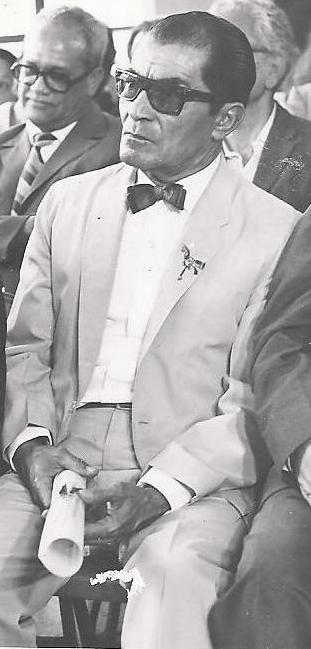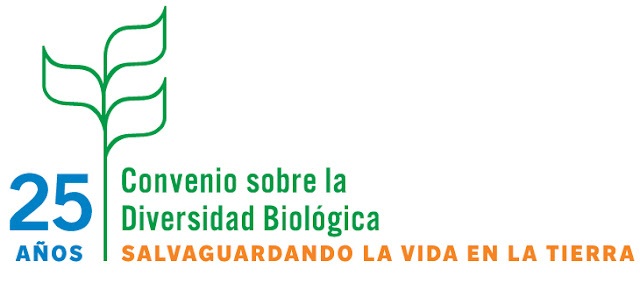THE TURPIAL: THE BIRD THAT LOVED A NATION. HISTORY OF HIS DECLARATORY AS VENEZUELA NATIONAL AVE
taken from https://cronistasanfelipe.wordpress.com/
WILLIAM OJEDA GARCIA
In San Felipe one learns incredible things. Talking and singing like birds is something weird, almost impossible to believe, not for Ramón Antonio Urbano who throughout his life was devoted to the investigation of birds. So much was his passion in this enormous work for science reaching to maintain loving ties with the birds, he spoke and sang like them, just as he did with the Amazonian Indians who almost slept on the heights of the trees with them. Something unique in the world, a human being capable of interpreting the feeling of birds.
No wonder a prestigious foundation of natural sciences recognized worldwide gave it the name of a bird in homage to Ramón Urbano: Urbano, Urbaneja, Urbanois, that is its scientific identification, as it is known by the world of ornithology, of the natural sciences. A yaracuyan bird with two legs, without wings, or plumage, but flying in a work useful for science ... for humanity, watering an example throughout the continent. Even a book of poems dedicated to birds, "The Scope of Simple Emotion," wrote this countryman born in San Pablo, Arístides Bastidas Municipality, on August 8, 1917.
Ramón Antonio Urbano
One day he thought of launching the Turpial as a candidate for Ave Nacional. Urbano was campaign manager of the little bird, the strategist who spoke with his heart. He did not post posters, he did not make cheating speeches, he did not offer false promises, nor less he distributed bags with ñingas of crusts as populism customarily in the democracy of threads and elected. Urban chained itself in the national feeling, established a common bridge for the recognition that the people had for the famous bird with a slender body, black robes and deep gold, with lyrical and sonorous singing that embellished the people. And there he went on campaign, not from house to house, beating false kisses and giving the bear's hug, but getting to the feeling of the people.
"Venezuela is impatient for its National Bird; and a teaching institute, you can select it. In the press it is commented, that there are many competitors; but we must take into account, its main factors. They say that El Cucarachero has a reputation as a singer; and that's why the llaneros call it the nightingale. Whoever wants to hear the target, on the edge of the meadow; leave free in the savanna, the Paraulata Llanera. In the caneyes of the plain, there is nothing more singular; how amusing to the human, the songs of the Turpial. It is found in the banana tree, and in the bars of the corral; whistling at the cowgirl, at milking time. "
"The llanero feels joy when a bull is going to link; and he hears the morning song that the Turpial greets him. In the fence of the tranquero, the Turpial is also perched; greeting the farmer, when he is going to shepherd. A candidate has been launched for the National Bird; but we have to wait a while, while a Turpial sings to us. It is the charm of the llanero, and fun of the caporal; You have to take off your hat to listen to the Turpial. His figure is imposing, colorful his colorful; and is always present, the llanero in his corridos. From Venezuela the champion, in its cardinal points; The National Bird Pavilion will be yours. Today the Natural Sciences, he wanted to crown him: and among the vulgar names, he is called Turpial. When they have occasion, to approach the tunales; prefer the Falcon route, so that the tourists can hear ".
In his field of simple emotions 1959, the countryman and admired poet Pedro Manuel Vásquez tells us: "sometimes for subitnea joy of the spirit we surprise facts, events or characters that in one way or another, contribute to the strengthening of the daily existence and increase of progress in unknown planes, or at least few disclosed. It is like this, as in any homeland, already in this dizzying, amazing and changing city of Ávila, praying in a clear provincial landscape of the province we find, at the top of the road, in our daily wanderings, with worried spirits, who perform noble tasks in the field of culture, teaching or research in any of its expressions. To this last category belongs the modest, restless and dreamed gentleman Yaracuyano Ramón Urbano, to whom these days we have surprised by those streets Caracas, stunned of trafago, gorges of uncontrolled people of the meekness of other times ".
A sympathetic anecdote that registers this election process in a tense moment for the national life, since the elections were approaching where the dictator Marcos Pérez Jiménez, tried to reinstate himself as President through a plebiscite incorporated to the electoral Law in reform approved in the race for the National Congress on November 13, 1957, which provoked reactions in the town that later overthrew him.
It turns out that Dr. Ramón Aveledo Hostos, President of the Venezuelan Society of Natural Sciences, who once organized a national conservationist forum in San Pablo and was a close friend of Urbano and Aristides Bastidas, sent a telegram to his colleagues in Zulia: It is urgent to receive the name of your candidate bird ... ". The dark National Security intercept the message and interpret that the candidate bird would be some candidate in the presidential elections. Immediately they arrested Aveledo and put him straight into a torture dungeon, demanding the minions to "sing" the traitor's name, while the beaten president of the Venezuelan Society of Natural Sciences mentioned the Cucarachero, the Paraulata, the Cristofué, the Corocora, the Jay and of course, the Turpial. Unless it is not a culillo, it is not known why the dictatorship got into this when that pack had its own fauna represented by the famous "three piglets".
The thing became clear and the election took an amazing, unexpected rebound. Intellectuals, poets, writers, caricaturists, journalists, scientists participated in the campaign. There were Miguel Otero Silva, Ida Grancko, Federico Pacheco Soublette, Anibal Nazoa, Francisco Tamayo, Angel Rosenblat, Julio Barroeta Lara, among many, each with his bird.
The Turpial the National Bird decreed on May 28, 1958
Urbano, a renowned ornithologist in Latin America who worked for many years with William and Kathy Phelps, who supported him at all times with his birds, promoted the candidacy of the cheerful Turpial. With his prose, he recorded those events of the meeting to select the National Bird. In special meeting, of the Natural Sciences; They have highlighted the Turpial in the National Birds. Attended by people from outside, to the beautiful meeting; and it looked like a "cockpit" in moments of emotion. There was no silent minute, in that worthy room; that even the President, added to the discussion. After the hullabaloo, which formed the concurrence; the bird of preference was not yet elected. Many silenced their mouths, and caused them indignation; that only "El Gallo de Roca" was on display. It was compared by way, and in such a singular way; that they adapted spurs, to throw it to the Turpial. There are many opinions, by the National Bird; but for many reasons, they have mentioned the Turpial. And Eugenio de Bellard, with a Guaracho in his hand; He says he has a radar, and that he is very Venezuelan. It is declared advisable that the vote be taken in secret; and so there will be no problem, that anybody gets elected.
In that discussion, by the National Bird; all gave their opinion, for the election of the Turpial. The vote was very legal, in the midst of emotion; and with the name of Turpial, the box has been overflowed. The "disturbance" was great, and the clapping was so long: when the box was opened, and the Turpial triumphed. Everyone tormented, by divine applause: the defeated get ready, and soon they take the road. And the doctors, in a hurry, in the midst of so many people; they ignited the engines, and scraped suddenly. Gentlemen is over, the famous discussion; where it has been cataloged, in Ave de la Nación. And if they buy in the corner, to our "Gallo Pelón"; let go of fine chicken, to catch good pigeon. "
So intense and beautiful was his campaign to launch the Turpial as a candidate for the rank of National Bird, which Ramón Urbano gave free rein to his excitement, after the jury's opinion: "There being no other requirement, because everything is written down; I do not quote the Cardinal, because they have exterminated him. The doctors, poets and graduates meet; and the votes are greater, for the Turpial that has won. But he's still singing, our elegant Turpial; and thus representing, our National Bird. And here the author ends, as the good saying goes; who has said that he is a painter, our famous Toucan ".
Ramón Urbano came to Yaracuy with the good news of the choice of his bird, he went all over the country with the Turpial of his soul, promoting the virtues that justify his category of national emblem. A bird with lush foliage, brightly colored in deep yellow almost orange with an intense jet black mixed with pure white lines and the blue ocular fringe enveloping his eyes. A bird of extraordinary beauty with a sharp beak and stylized legs with robust thighs in silver sparkles that nobody uses. And that song so beautiful, sonorous, so slow and modulated that it can be heard from afar as a symphony of love for the Homeland.
On May 23, 1958, by decree of the national government, the Turpial was declared a National Bird.
williansyaracuy@hotmail.com
Taxonomy
Animalia Kingdom
Phylum: Chordata
Class: Birds
Order: Passeriformes
Family: Icteridae
Genus: Icterus
Species: I. icterus
(Linnaeus, 1766)
Conservation status
Estatus de conservación
Preocupación menor (UICN 3.1)


| Taxonomía | ||
|---|---|---|
| Reino: | Animalia | |
| Filo: | Chordata | |
| Clase: | Aves | |
| Orden: | Passeriformes | |
| Familia: | Icteridae | |
| Género: | Icterus | |
| Especie: | I. icterus (Linnaeus, 1766) | |
Animalia Kingdom
Phylum: Chordata
Class: Birds
Order: Passeriformes
Family: Icteridae
Genus: Icterus
Species: I. icterus
(Linnaeus, 1766)
Conservation status
Estatus de conservación
Preocupación menor (UICN 3.1)






Comentarios
Publicar un comentario